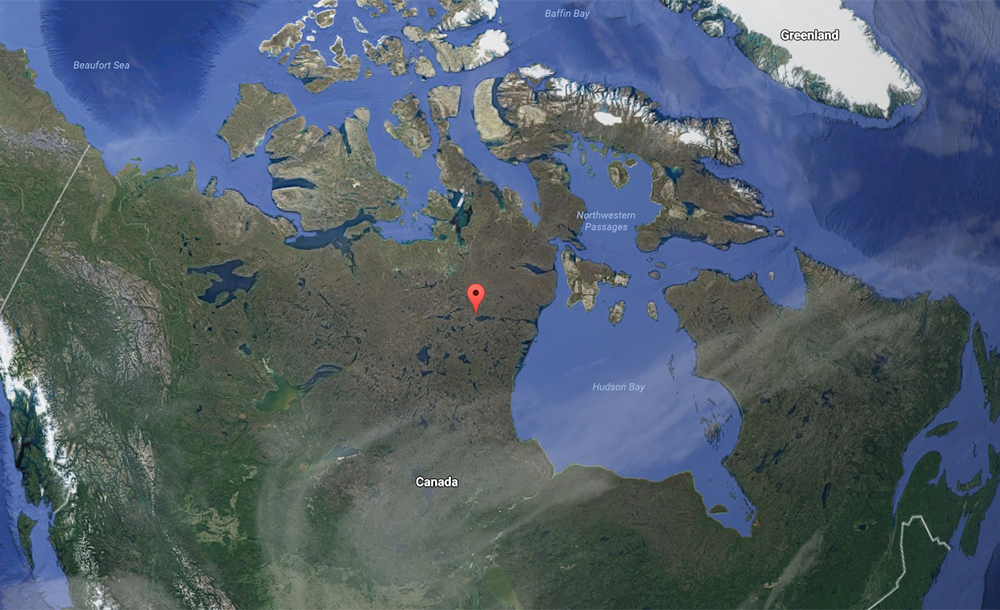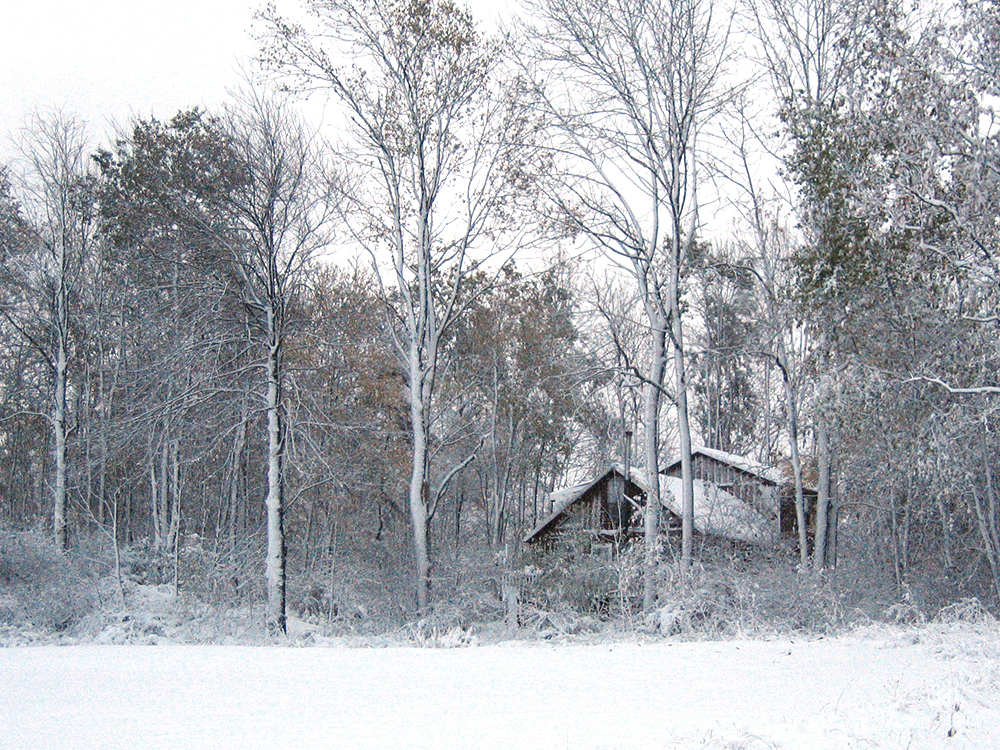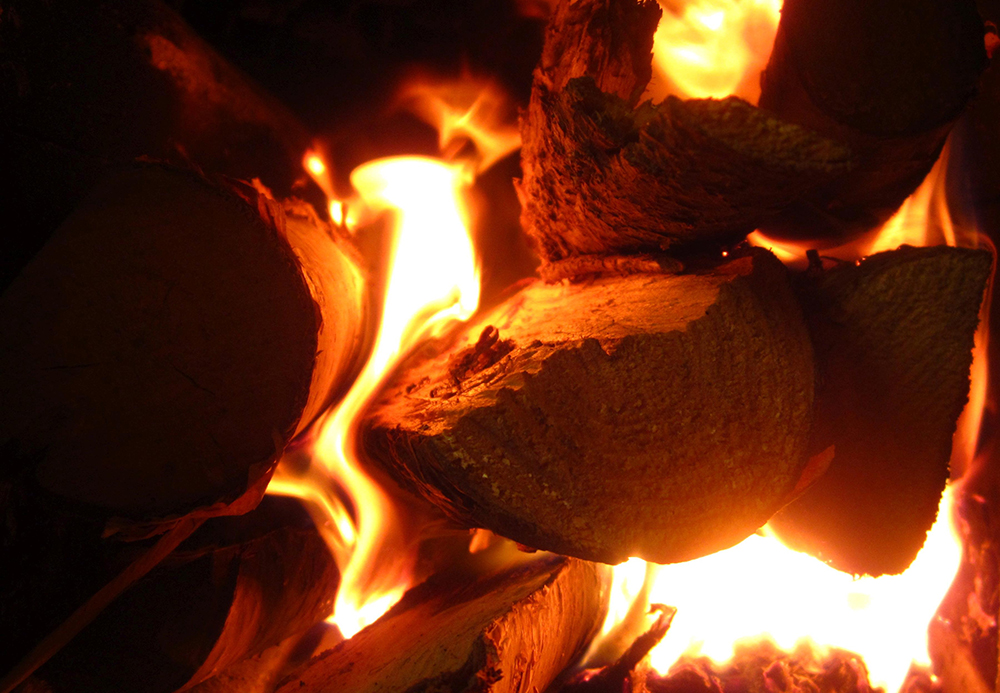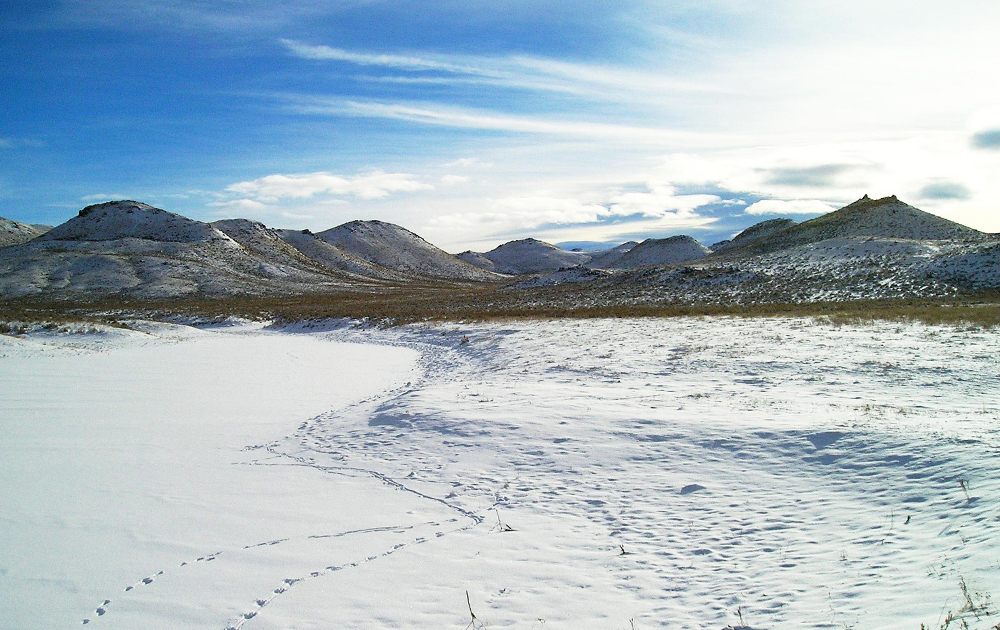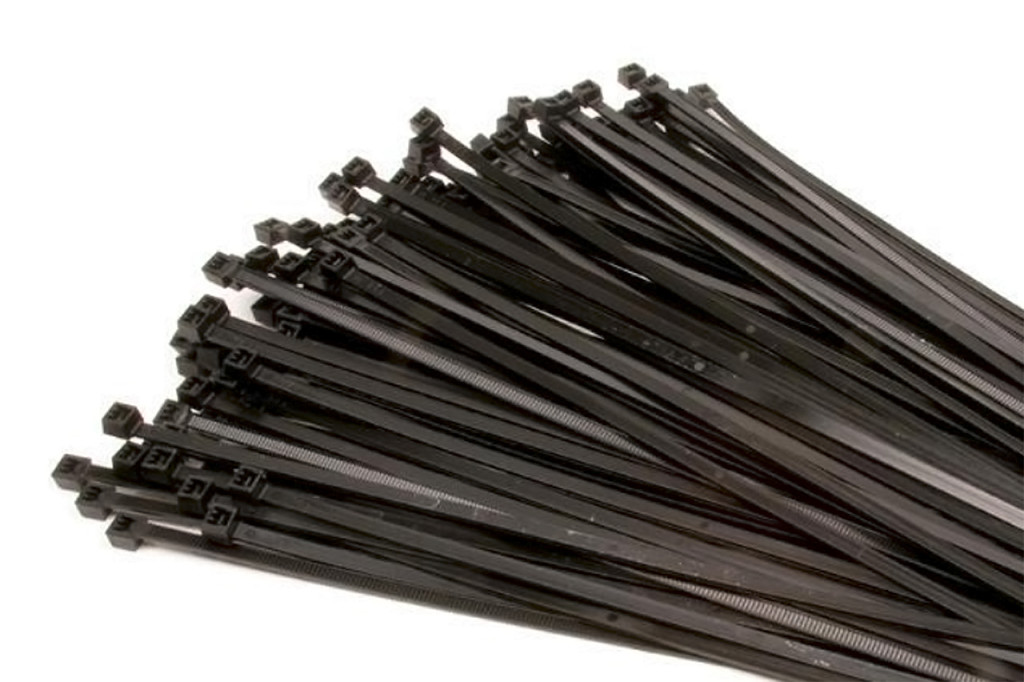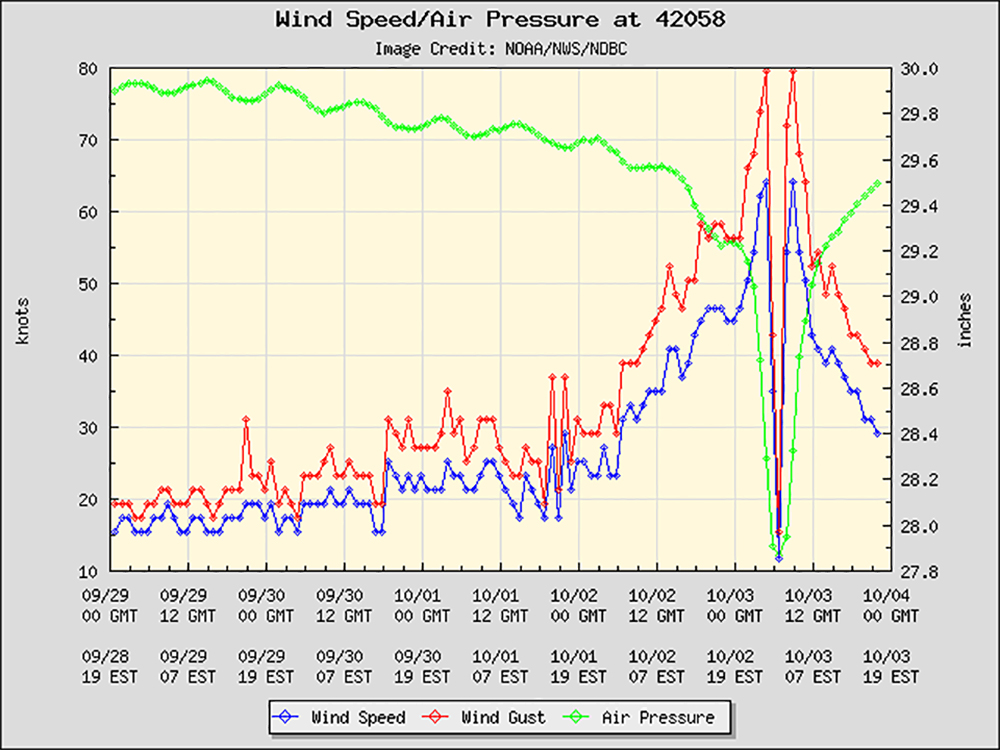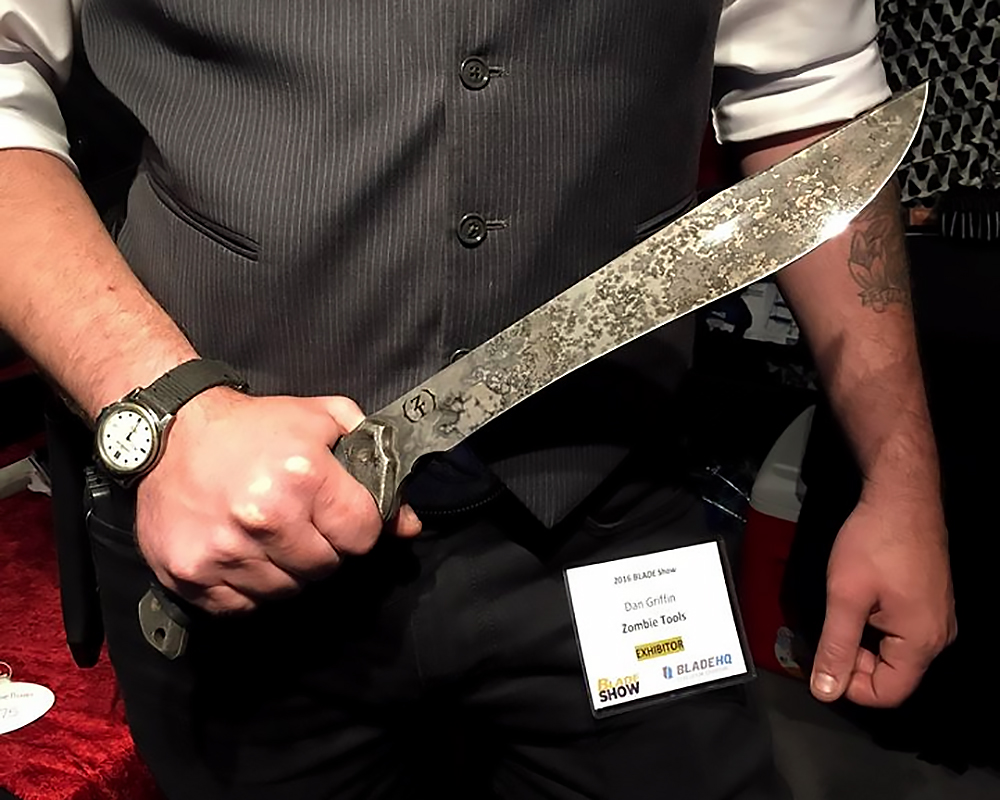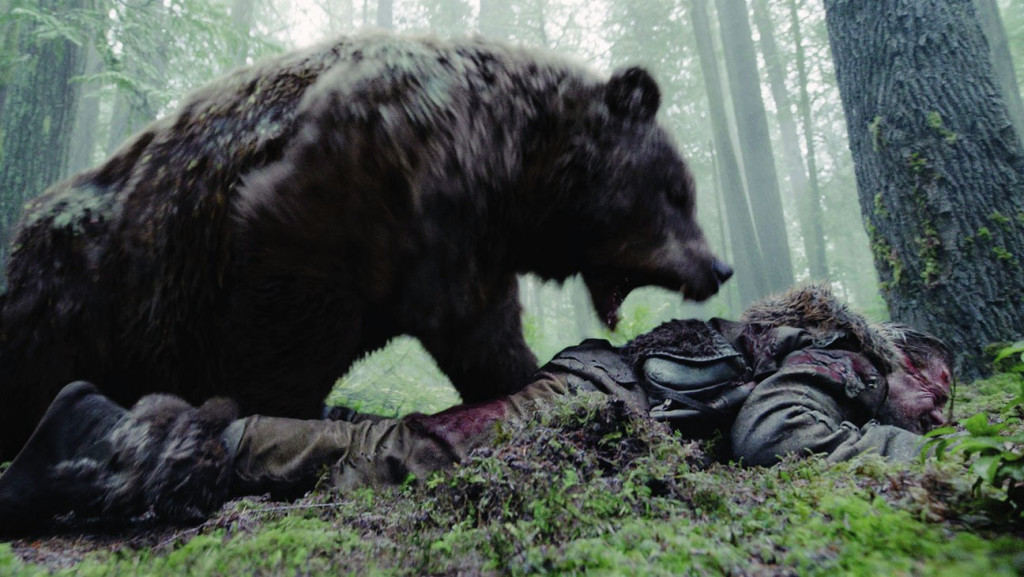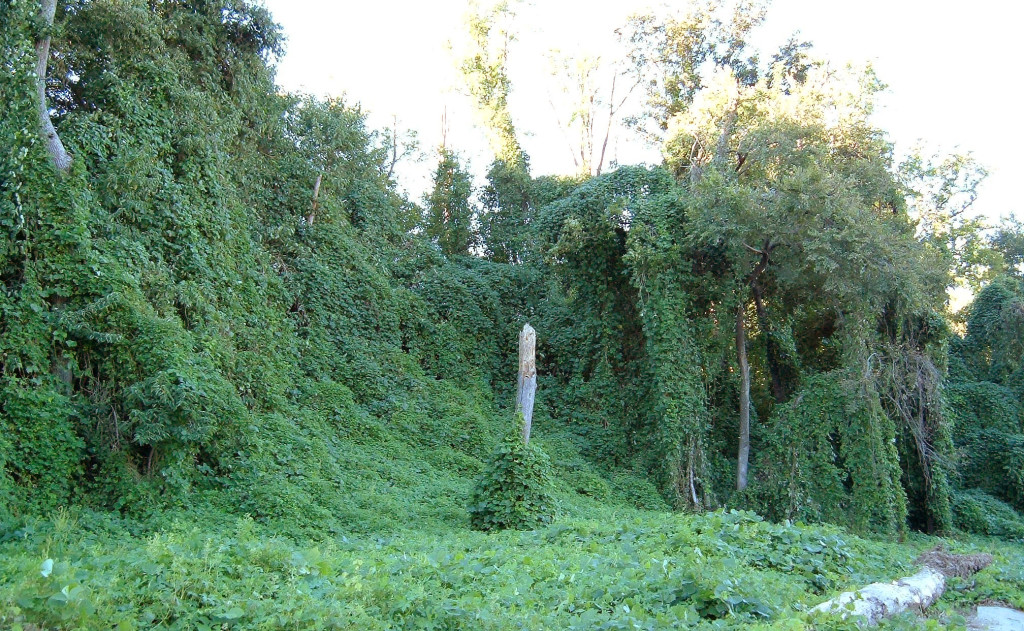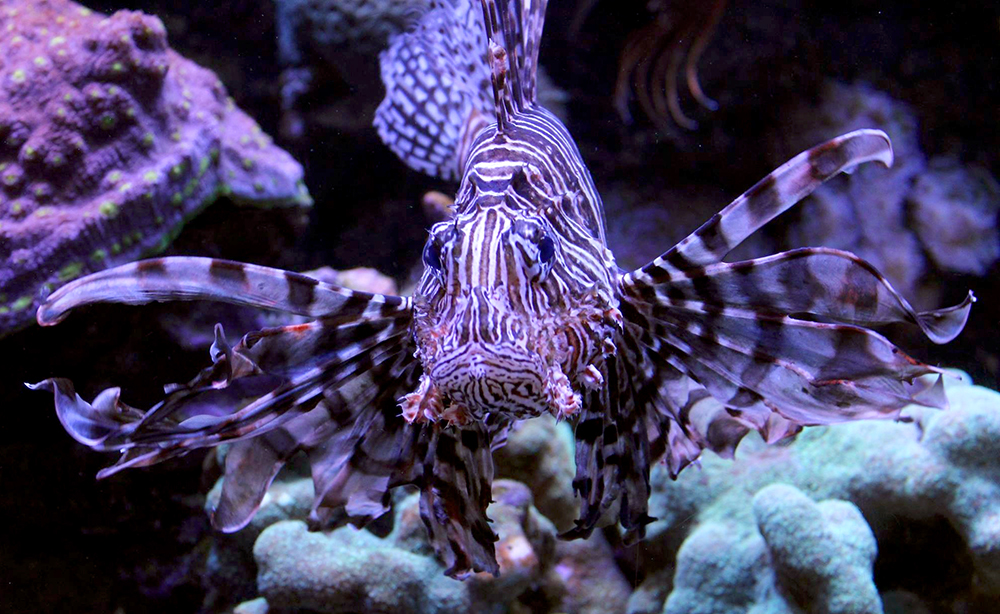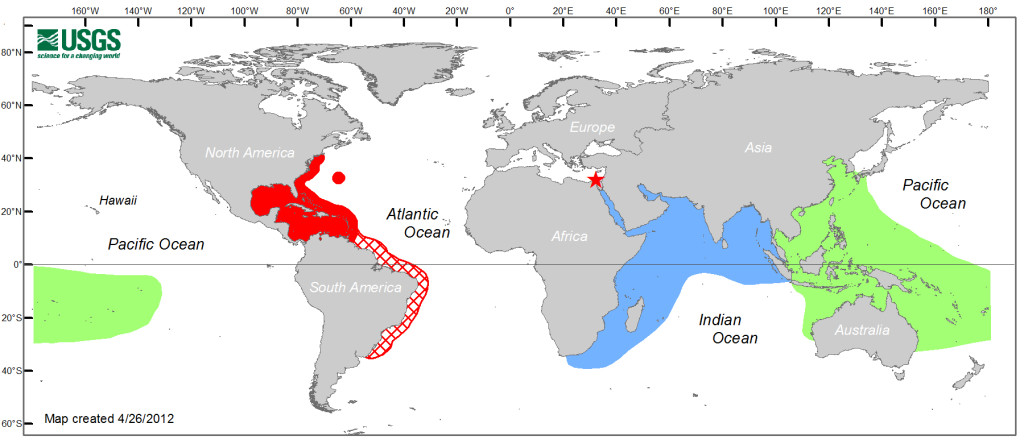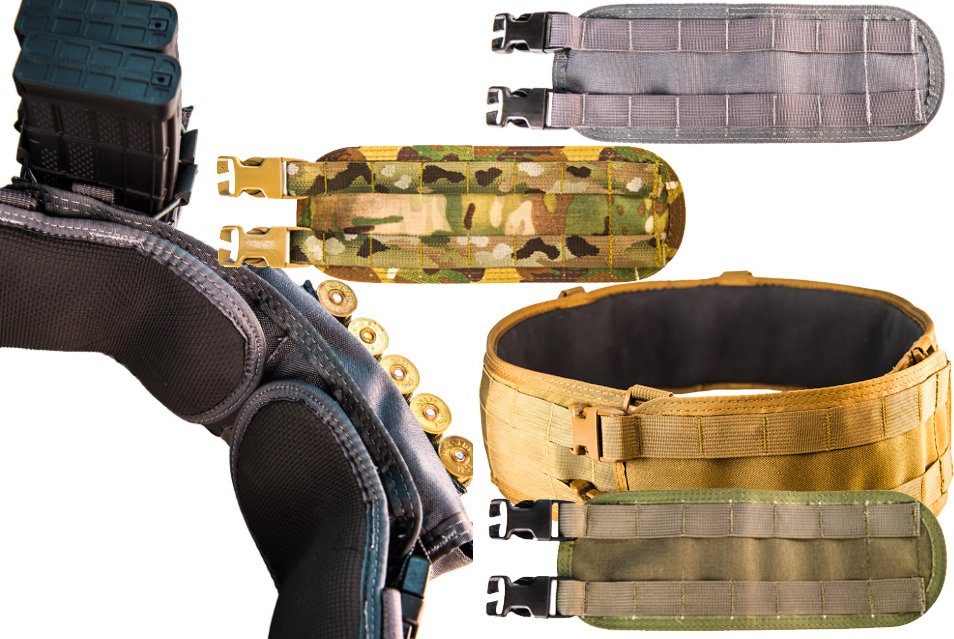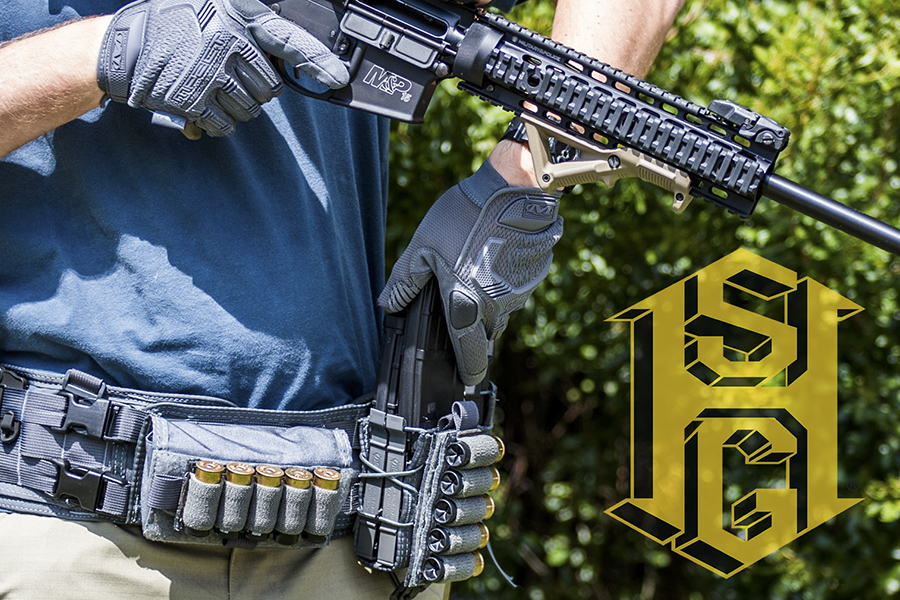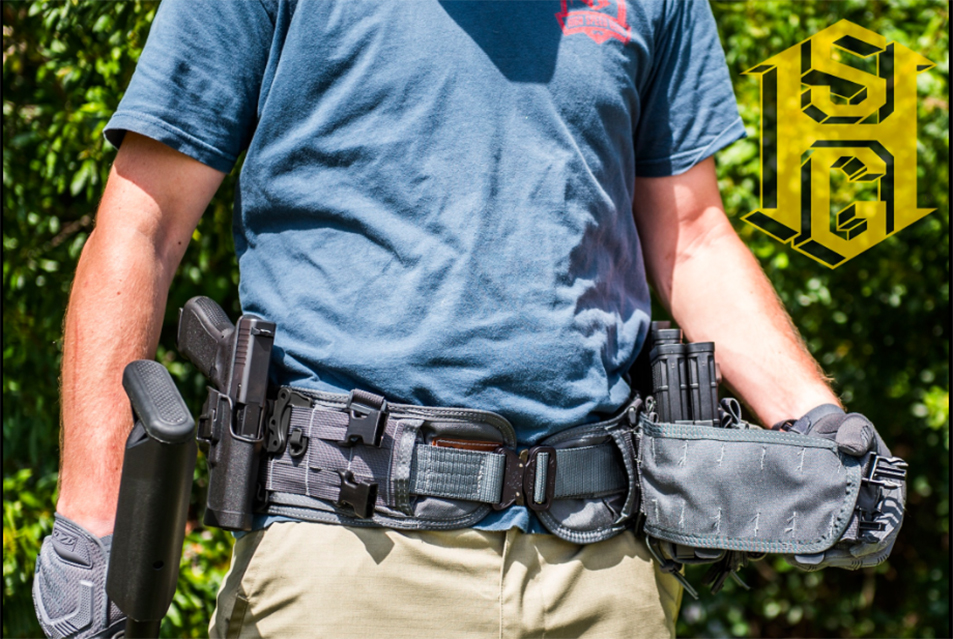Myth #1: Defining the Danger
Radiation is inherently dangerous.
The mention of the word radiation tends to evoke thoughts of mushroom clouds, death, and destruction. However, radiation is simply a natural phenomenon that describes the emission of energy waves or particles. You're experiencing radiation right now, in the form of light, heat, and invisible radio waves. Microwaves, sound, and seismic waves are other forms of radiation.
The potentially dangerous form of radiation is what's known as ionizing radiation. This type can sometimes knock electrons off atoms, changing their structure and potentially harming the DNA inside living cells. Ultraviolet rays (such as those found in sunlight) and X-rays fall into this category, as do alpha, beta, and gamma radiation.
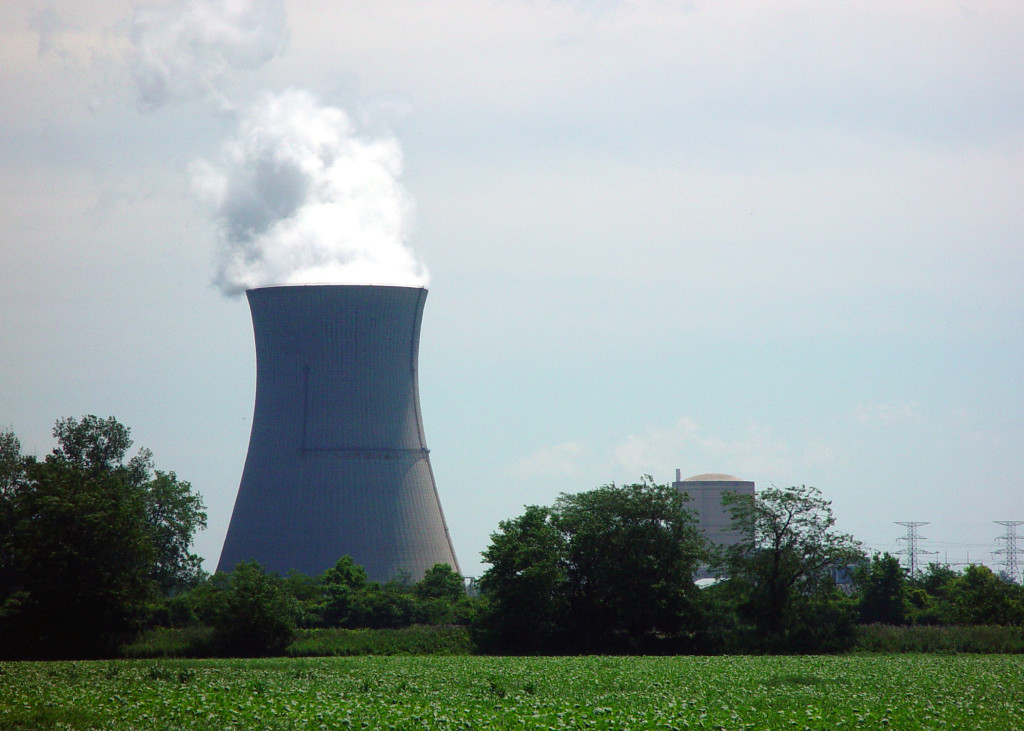
Without delving too deep into the science behind this topic, it's important to remember that the vast majority of radiation is not harmful. The U.S. Nuclear Regulatory Committee (NRC) states, “We live in a radioactive world, and radiation has always been all around us as a part of our natural environment.”
Myth #2: Glow
Radioactive materials glow, pulsate, and/or are brightly colored.
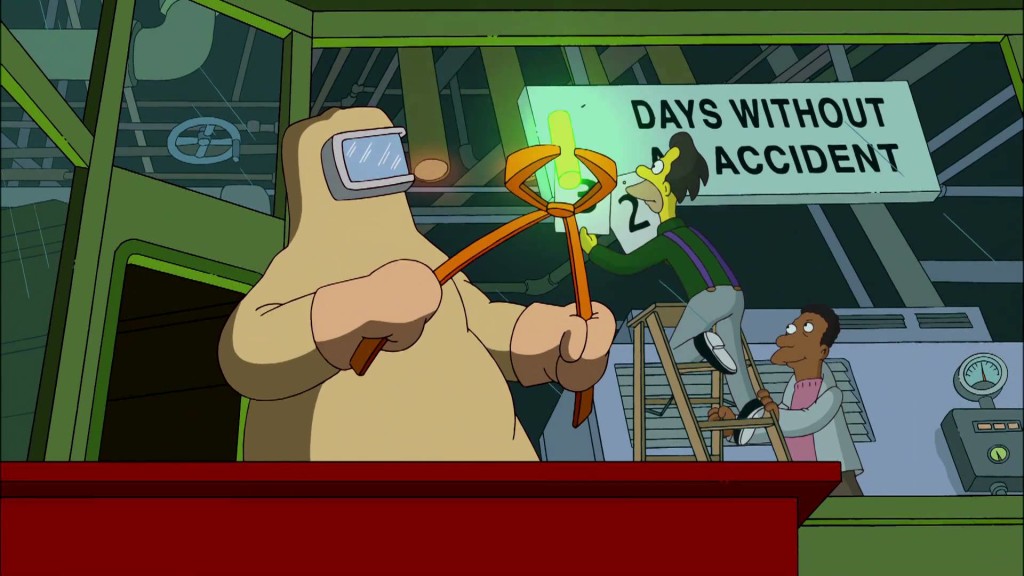
A plutonium fuel rod on “The Simpsons” is depicted as glowing bright green.
There's a grain of truth to this myth, as certain radioactive materials can produce a luminescent (glow-in-the-dark) effect. But—and this is a key distinction—the radioactive material itself isn't what glows, it only produces a glowing effect on certain other substances in specific conditions.
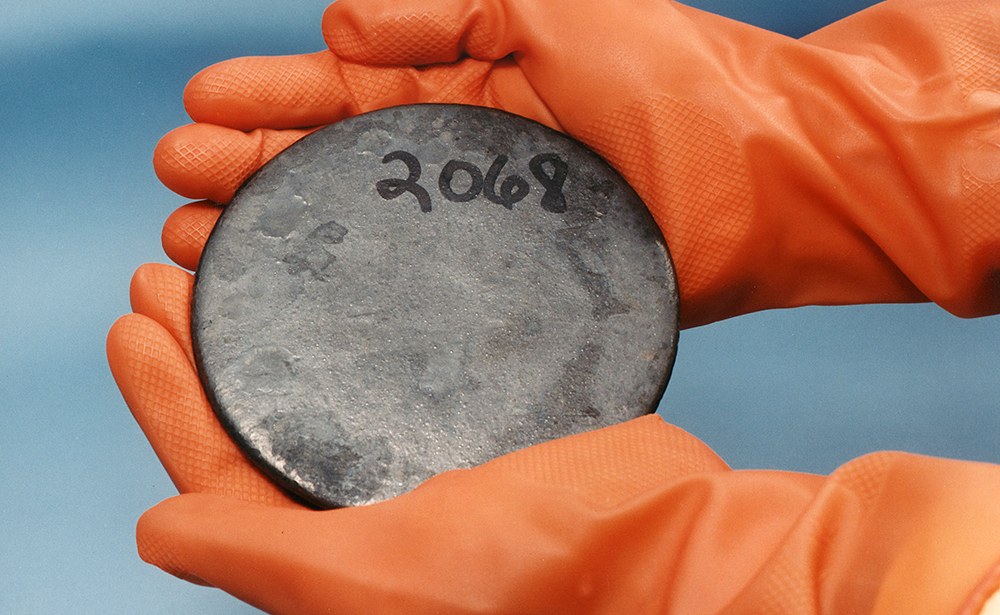
A disc of enriched uranium appears blotched gray. Source: eia.gov / Wikipedia
Trace levels of radiation produced by elements such as radium and tritium can be used to excite the molecules of other phosphor materials, producing a faint glow (radioluminescence). There's also a complex effect called Cherenkov radiation, which causes nuclear reactor cores to produce a blue glow in underwater cooling pools.
So, radioactive materials don't necessarily glow, but they can sometimes produce a glowing effect in other materials. Most of the time, radioactive isotopes look like ordinary silvery-grey metal.
Myth #3: Volatility
Fuel rods and other radioactive materials explode easily if jostled, dropped, or smashed.

Actually, the opposite is true. Turning a radioactive material such as uranium into a nuclear bomb is an extremely difficult and complex process. It took some of the world's brightest scientists many years to figure out how to trigger a chain reaction and produce the first atom bomb. We're sure Oppenheimer and friends would have figured it out pretty quick if all it took was hitting some uranium-235 with a big mallet.
On top of this, the type of uranium found in nuclear reactors is not the same type used in bombs. Reactors use slightly-enriched materials with low fissile content (about 4 percent), for a stable power source. Bombs use highly enriched and volatile materials with high fissile content (90 percent or more), in order to create an effective chain reaction.
Obviously, radioactive materials must be transported with great care, but this is in order to prevent accidental radiation exposure—not because they could explode unexpectedly.
Myth #4: Medical X-Rays
Medical or dental X-rays produce dangerous amounts of radiation.

Radiation dose comparison chart from the U.S. Nuclear Regulatory Commission (NRC).
On one hand, medical and dental X-rays do account for about half of any given individual's radiation exposure each year. On the other hand, this amounts to approximately 310 millirems per year for the average individual, according to the U.S. Nuclear Regulatory Commission. To put this number into perspective, the maximum safe annual dose for an individual who works directly with nuclear materials is 5,000 millirems. Studies of the Hiroshima and Nagasaki bombings showed that a single dose of 600,000 millirems was lethal.
One chest X-ray produces about 10 millirems, which is less than a coast-to-coast plane flight (12 millirems) and an infinitesimal fraction of what would be considered dangerous.
Myth #5: Transparency
High levels of radiation produce an “X-ray vision” effect on nearby people or objects.

A depiction of Superman's X-ray vision powers on the TV show “Smallville”.
This “X-ray glasses” trope is often shown in TV shows, cartoons, comic books, and movies for comedic effect. Unfortunately, the reality is that X-rays are not visible to the human eye in the same way that visible light is. Think about it—any X-rays you manage to produce would pass straight through your target and keep going. X-ray machines only work because the output is captured on X-ray-sensitive film or an electronic sensor behind the target.
Also, in this futile attempt to see through objects, you'd be constantly exposing everything in your path to high doses of X-rays. As we mentioned above, short bursts of X-rays in a medical setting aren't harmful, but the same can't be said for using that X-ray emitter continuously.
Myth #6: Power Plant Emissions
Nuclear power plants emit dangerous amounts of radiation to surrounding areas during normal operation.
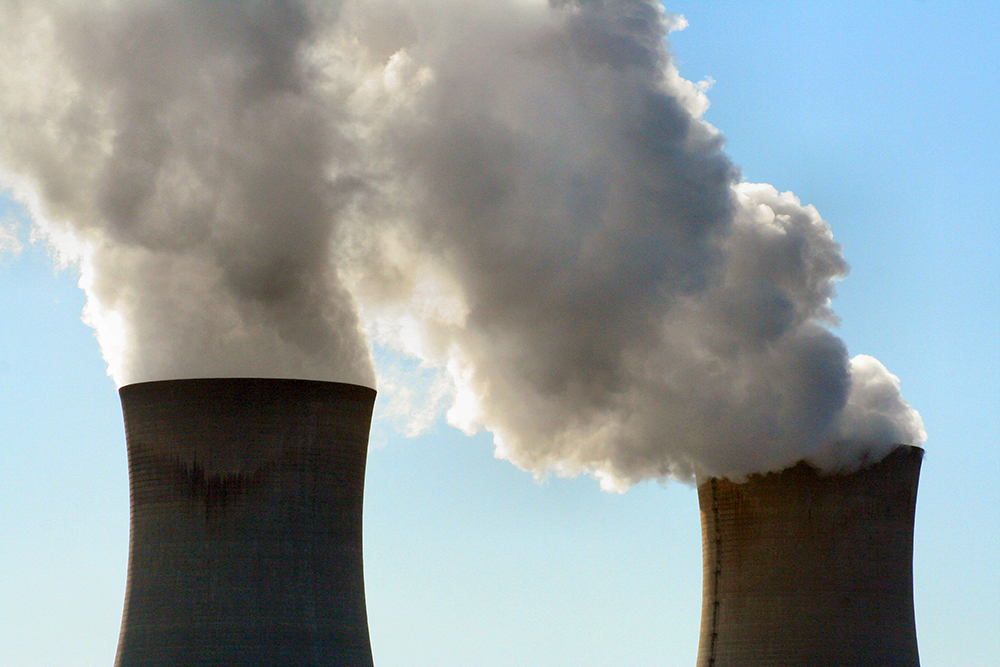
According to the NRC, someone living within a 50-mile radius of a nuclear power plant would receive an additional radiation dose of 0.01 millirems per year. Given that a medical X-ray produces 1,000 times that amount instantly, and is still considered completely safe, it's obvious that this dose is negligible.
The NRC also states that “most of an operating nuclear power plant's direct radiation is blocked by the plant's steel and concrete structures. The remainder dissipates in an area of controlled, uninhabited space around the plant, ensuring that it does not affect any member of the public. … Even in the very unlikely event of a nuclear power plant accident, it would be extremely unlikely that someone would be in an area for a sufficient period of time to receive a radiation dose that would be considered lethal.”
Myth #7: Marine Life
The Fukushima disaster caused dangerous levels of radiation in seawater, fish, and other marine life.

This myth became pervasive after the Fukushima nuclear power plant disaster in 2011. Like many myths, this has some basis in reality. After the disaster, there was a measurable increase in radiation levels found in the waters surrounding Japan, as well as in tuna caught in the Pacific ocean. However, just because there was a measurable increase does not mean that increase was dangerous.
Oceanographers called these oceanic radiation increases “detectable but not hazardous”, and found that the radiation levels in the aforementioned tuna were still ten times lower than the strictest food safety guidelines. Additionally, radiation expert Andrew Karam told Popular Mechanics, “I calculated that dissolving all of the fuel of all three operating reactors, plus the entire contents of all of the spent fuel pools at Fukushima into the waters of the northern Pacific would still give a person swimming in the ocean off Hawaii, Alaska, or California about one billionth the amount of radiation dose needed to cause any harm.”
Myth #8: Superpowers
Radiation can produce beneficial mutations or superpowers in humans.

Sorry comic book fans, radiation doesn't produce superpowers. If Bruce Banner was exposed to a massive blast of gamma rays in the real world, he wouldn't have become the Incredible Hulk. He would have become dead.
In reality, ionizing radiation does have the ability to damage the genetic structure of human cells. This can lead to higher cancer risk among those exposed, as well as many other physical symptoms. However, contrary to popular belief, studies indicate that there is no statistically demonstrable increase in birth defects for children conceived by parents who were previously exposed to high levels of radiation. It is therefore unlikely that any radiation-induced mutations will be passed to subsequent generations.
For more details on the effects of Acute Radiation Syndrome (ARS), pick up a copy of Issue 16 of our magazine, on sale October 7th, 2016.







